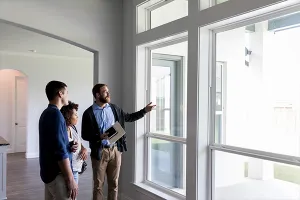Notwithstanding big tech company announcements that they are postponing office reentry plans, workers are returning to the office.
Among workers whose occupations are “management, profession, or related occupations” or “office or administrative support,” just 19% (15.4 million) said in December that they had teleworked in the past four weeks because of the pandemic. That’s according to the Bureau of Labor Statistics’ Current Population Supplemental Survey. At the nadir of the pandemic, in May 2020, 54% of workers (41.5 million) with these occupations teleworked.
The number of teleworkers still exceeds prepandemic levels, however. In 2019, just 9% of workers in those occupations said they worked from home.
Office occupancy rose during the third and fourth quarters of 2021, with 20 million square feet of office space absorbed. However, with the large drop in 2020, occupancy is still down by 108 million square feet compared to the level in the first quarter of 2020. The vacancy rate remains elevated at 12.2% compared to 9.7% in Q1 2020.
Postpandemic Trends
The National Association of REALTORS® quarterly commercial market survey tracks how the pandemic is affecting working from home, the demand for office space, and how and where the space is used. The Q4 2021 survey reveals:
- 65% of respondents reported more businesses adopting a hybrid work schedule.
- 63% of respondents reported more businesses in their local markets leasing smaller spaces compared to the prepandemic level.
- 62% of respondents reported consolidation of office space in their local markets.
- 57% reported more businesses with lease terms of two years or less.
- 69% reported more businesses investing in facilities and redesigning workspaces to enhance sanitation, hygiene, and physical distancing.
Surveys from other organizations support those trends. For example, CBRE’s 2021 Occupier Sentiment Survey, conducted in spring 2021, revealed that among large companies, those with 10,000 or more employees:
- 87% believe a hybrid work policy is the new normal.
- 47% expect employees to have an equal mix of time in and out of the office.
- 81% expect to reduce their office footprint.
Sun Belt Going Strong
Although the overall trend suggests a decline in office space demand, markets with strong job growth, lower office rent, and more affordable housing will tend to attract workers, businesses, and retirees. That, in turn, will strengthen demand for office space. As of Q4 2021, the Sun Belt states are experiencing the strongest commercial market conditions among metro areas with a population of at least 250,000, according to NAR’s Commercial Real Estate Market Conditions Index. Florida arguably has the strongest conditions, representing nine of the 15 strongest markets.








